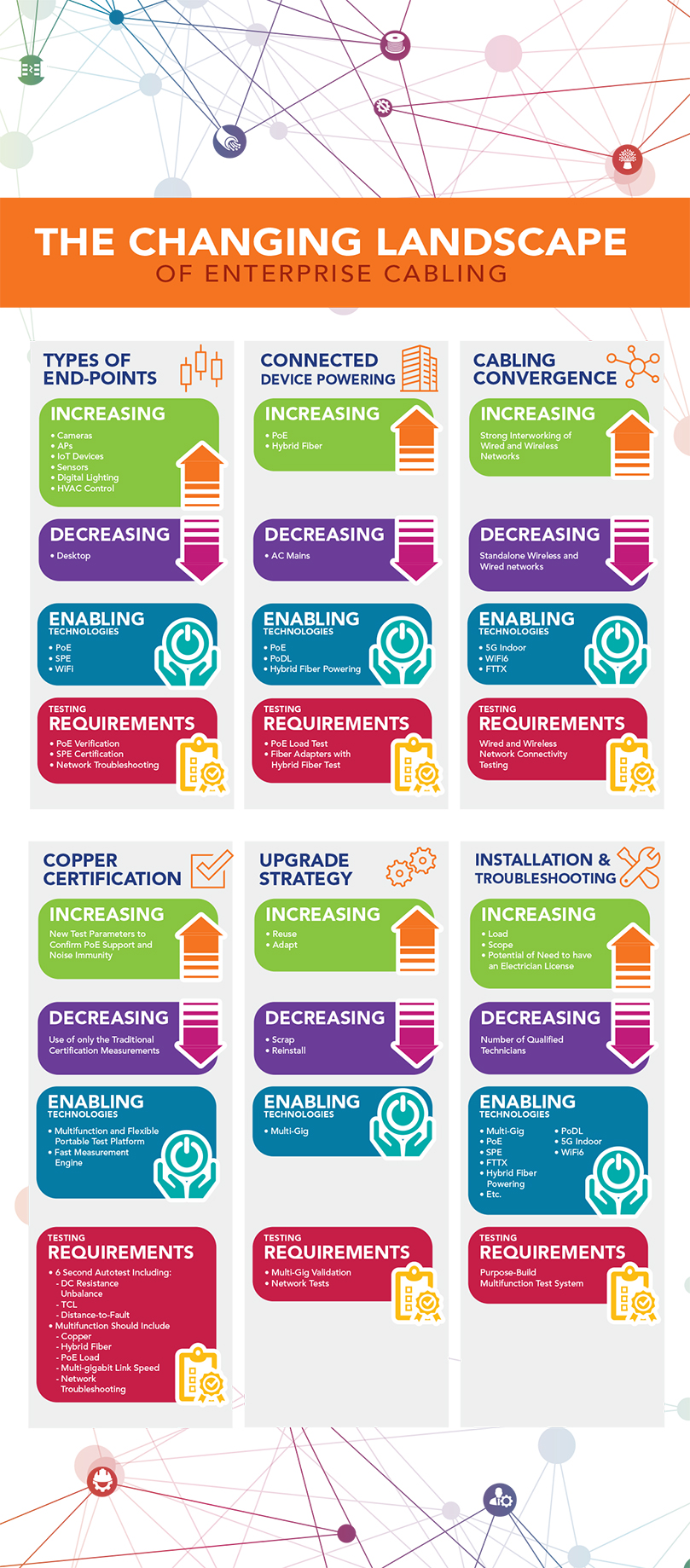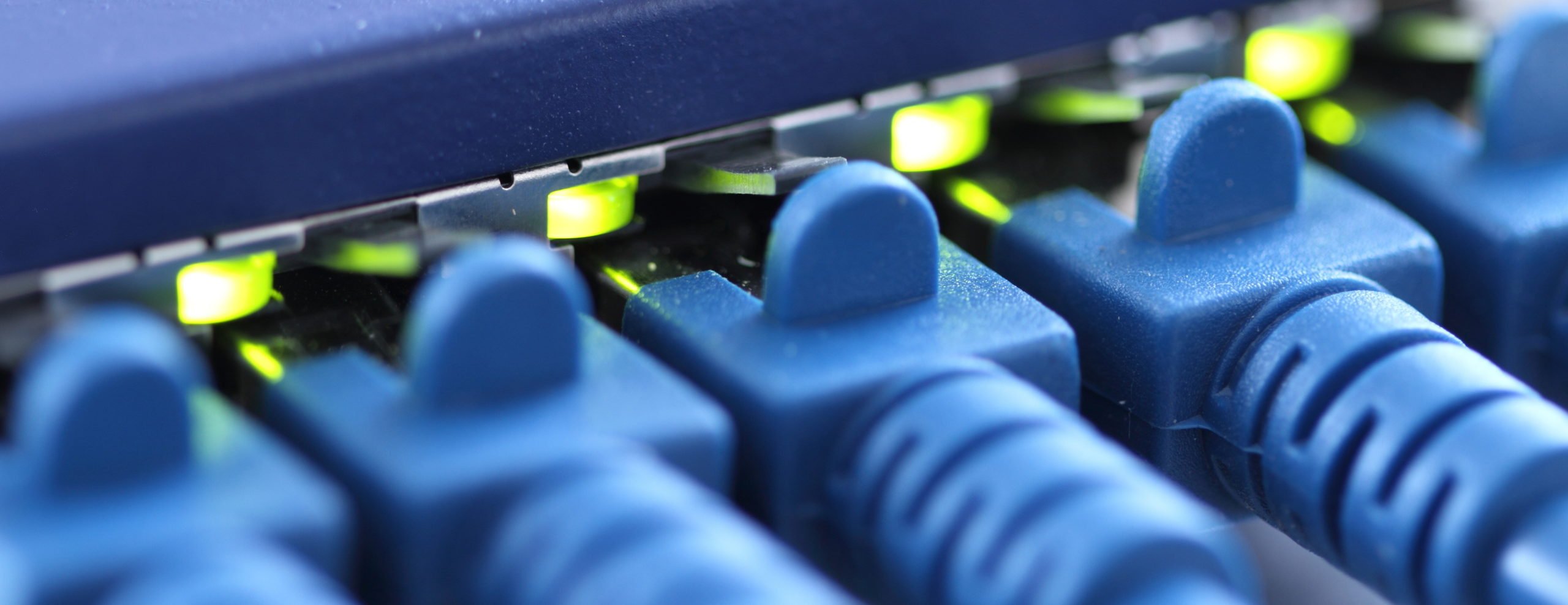CAT6A Cabling Benefits, Cautions and Use-cases
Network and cabling professionals are likely to come across different Ethernet cabling standards...

Enterprise cabling systems are going through a big paradigm shift. In the past, one of the main functions of the cabling systems was to connect the computer and IP phone in work-stations to the enterprise network backbone. This is rapidly changing as shown in the infographic below.

A large portion of cabling infrastructure now caters to security cameras, wi-fi access points, and other PoE enabled networked (IoT) devices. We are also witnessing the rapid adoption of 5G wireless systems. Due to its high bandwidth, low latency, and wide coverage, indoor implementation of 5G systems will typically comprise a large number of remote radio units with indoor antennas (RRUs). These RRU’s will connect to baseband units (BBUs) largely through PoE enabled CAT6A copper cabling, or fiber optic cabling.
When fiber optic cables are used due to their bandwidth and range advantages, it will increasingly be done as hybrid fiber cable, with copper conductor providing electrical power-sharing the same sheath with fiber optic data cable.
With the large number of devices connected for varying applications on-premise networks, the cabling infrastructure planning will see a dramatic change. Pre-installing cables for envisaged future requirements will in many cases be prohibitively expensive and impractical. Scrapping the existing cabling and re-installing is not an attractive alternative either given the rapid change in the networked devices and networking technologies. The planners will look for infrastructure options that enable scaling as requirements change, adapting to different networking technologies, and re-using existing cabling.
In this new paradigm, performing certification testing on the cables at installation time, although still mandatory, will not be adequate. The ability to perform validation testing will become crucial to ensure the smooth functioning of the networks. TestPro multifunction cable tester is designed with that trend in mind. The multi-gig validation test on TestPro performs SNR measurements at all supported network speeds. This provides a clear idea about possible upgrade options. A cable might have a positive SNR margin at 5 Gbps speed but might fail at 10 Gbps. With this clear outcome, the network planner can either choose to restrict the network speed to 5 Gbps or to use another higher quality link. It is much better of course to make this decision up-front rather than finding out after network turn-on. Similar to network speed upgrade, the TestPro also helps with PoE upgrade. With the ability to measure PoE type, voltage, active pairs, it is easy to confirm whether the PoE source is adequate for the intended powered device. Additionally, TestPro also provides a feature to actually load the PoE source and measure the actual current is drawn and voltage available at the device. These features are helpful in ensuring successful PoE operation.
Summary
Changing needs of network infrastructure makes it impractical to install the ‘perfect cabling system’ from the beginning. A tool that enables the evolution of cabling infrastructure with changing technologies and device categories, therefore, is essential for efficient network maintenance.

Network and cabling professionals are likely to come across different Ethernet cabling standards...
%20(1).png)
When a critical part of an enterprise network fails these days, businesses start losing money...

Many cable install professionals are under the false impression that a cable tester only needs to...
Leave a comment